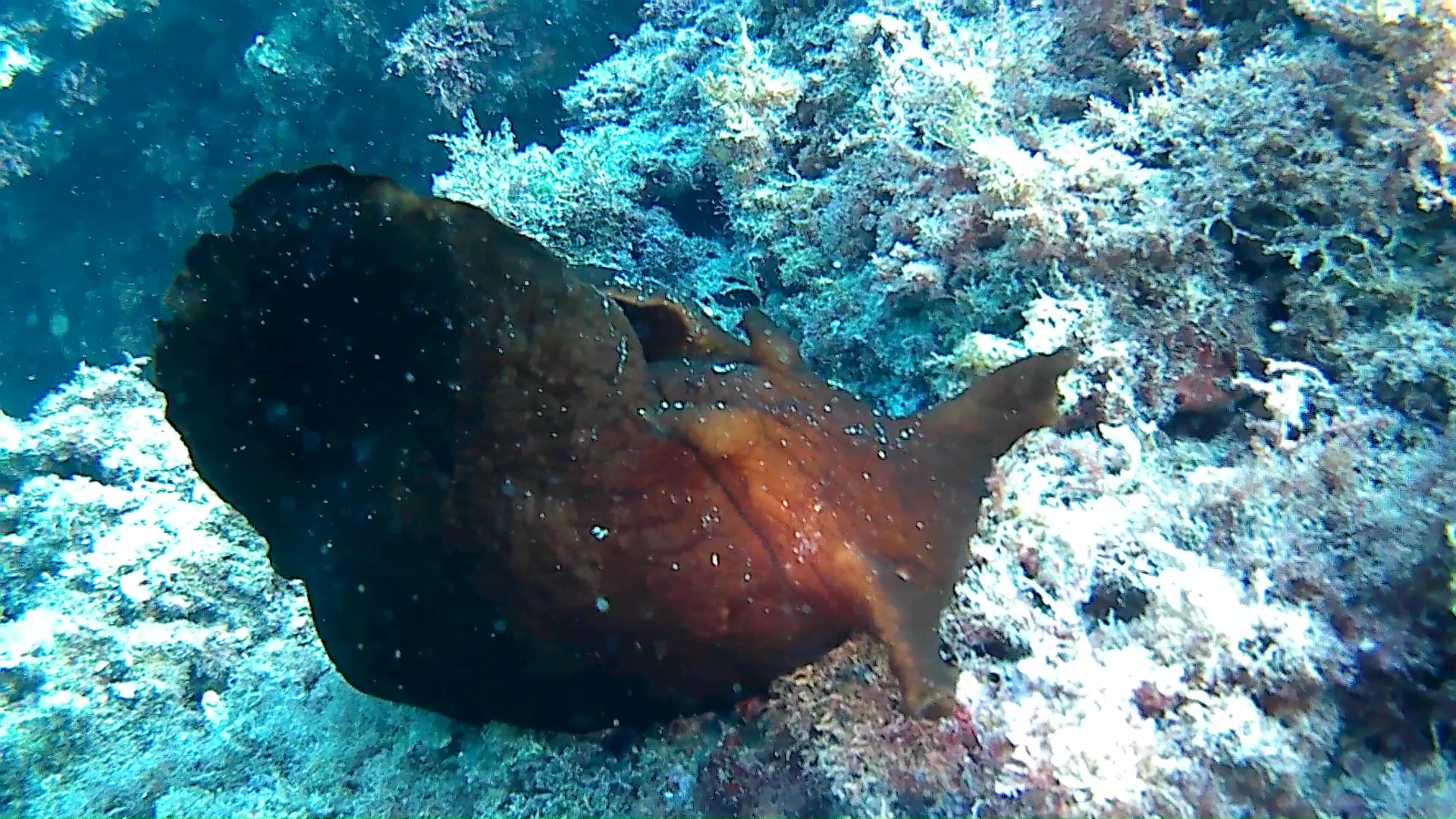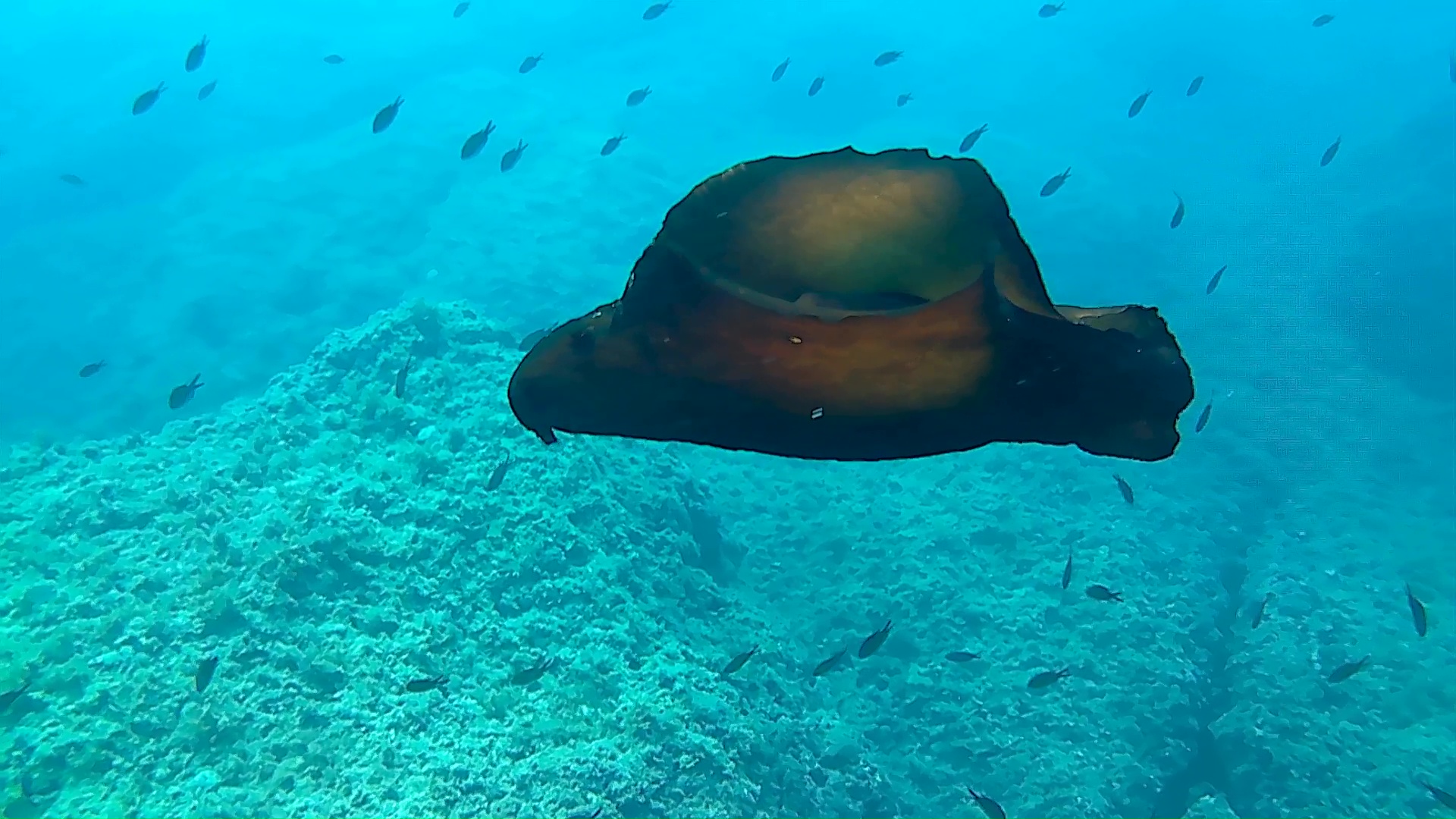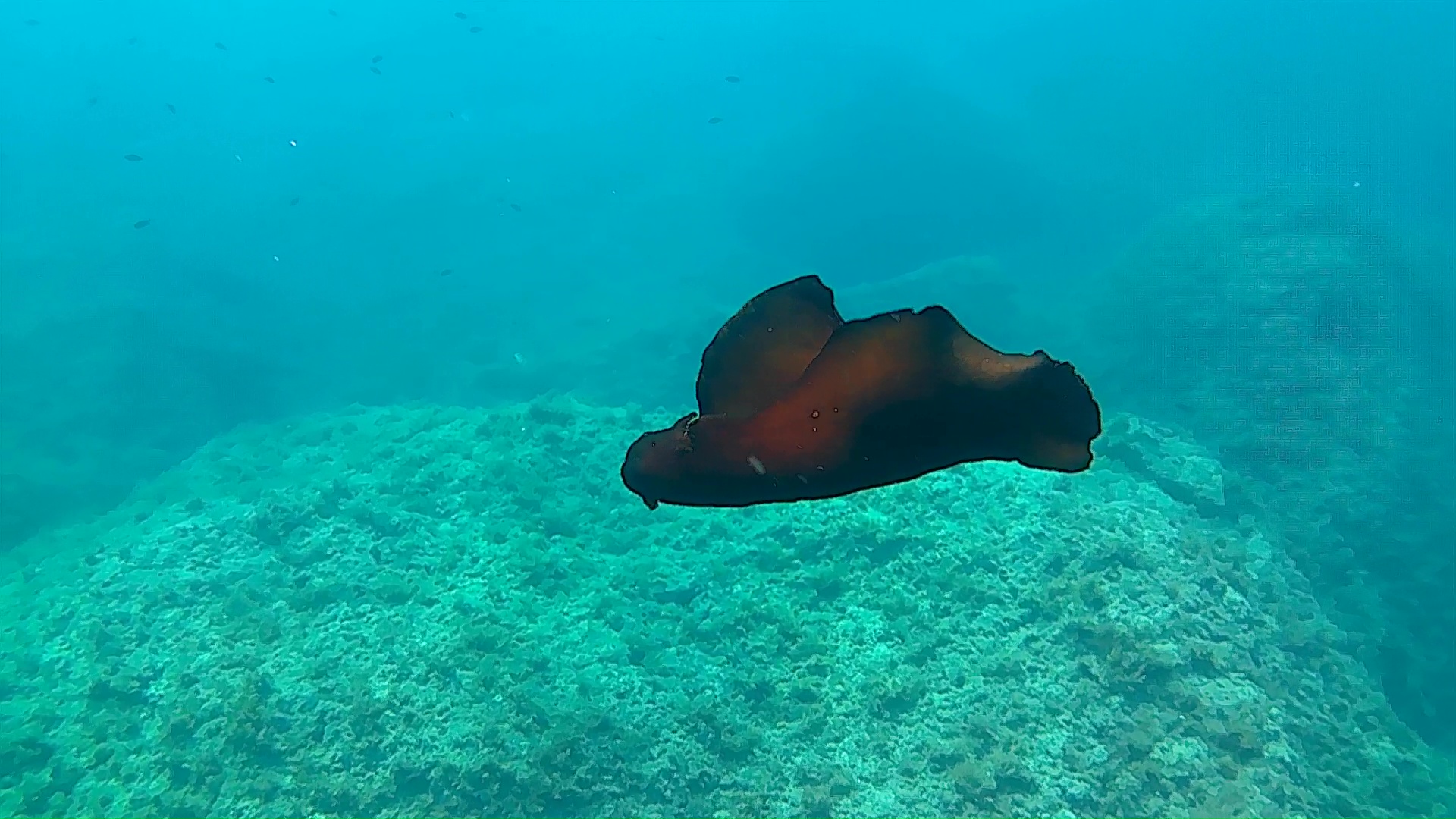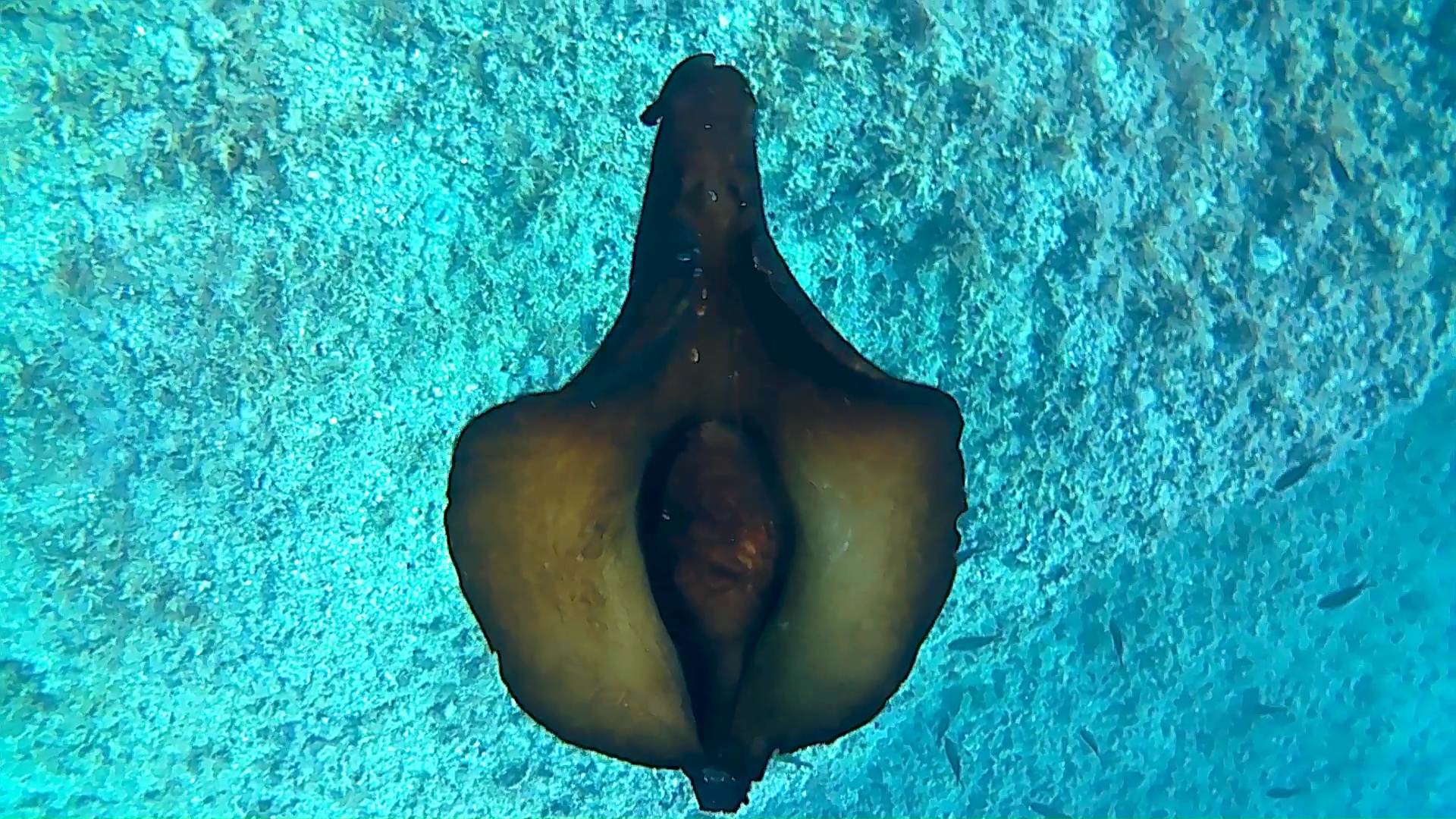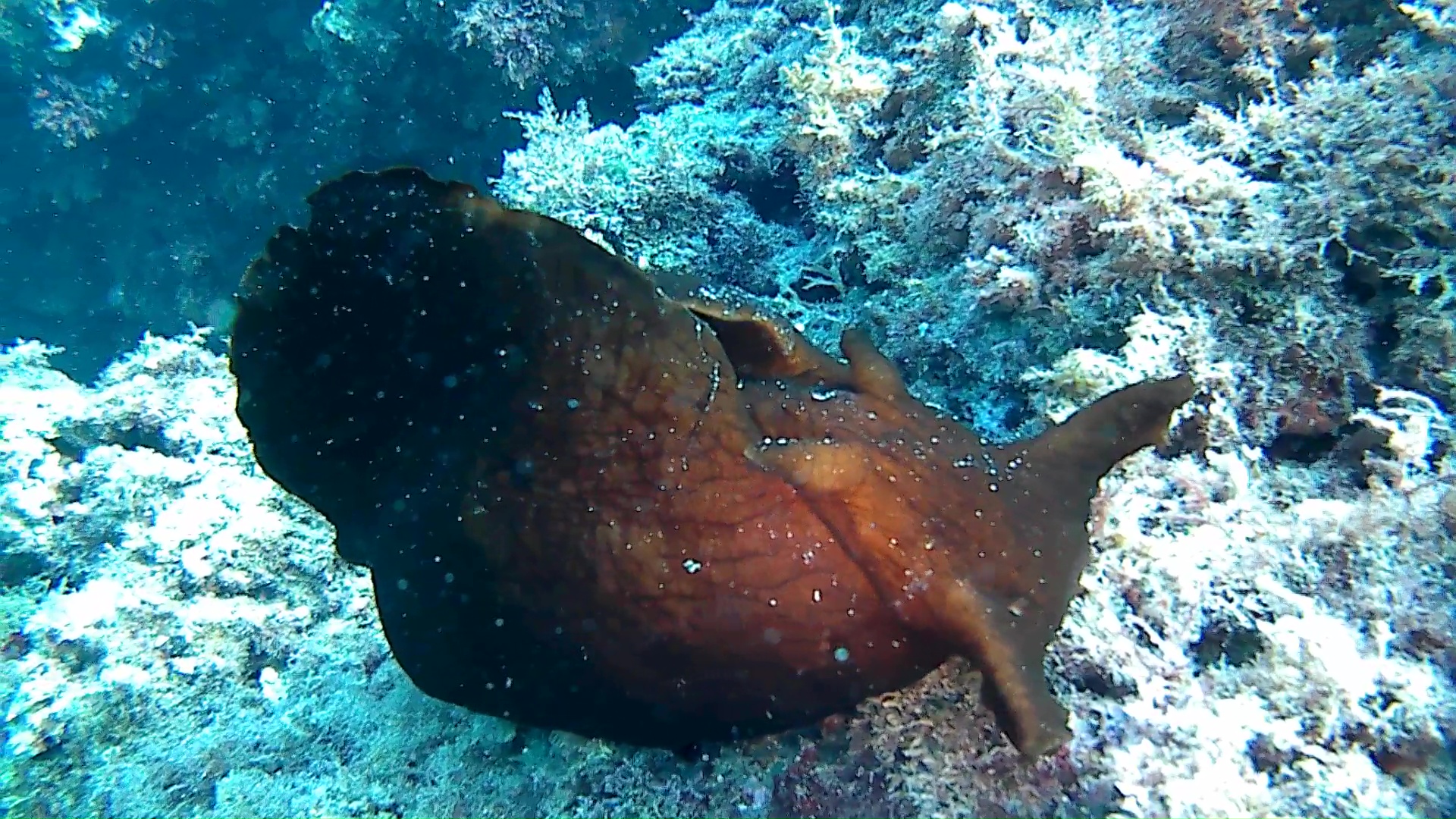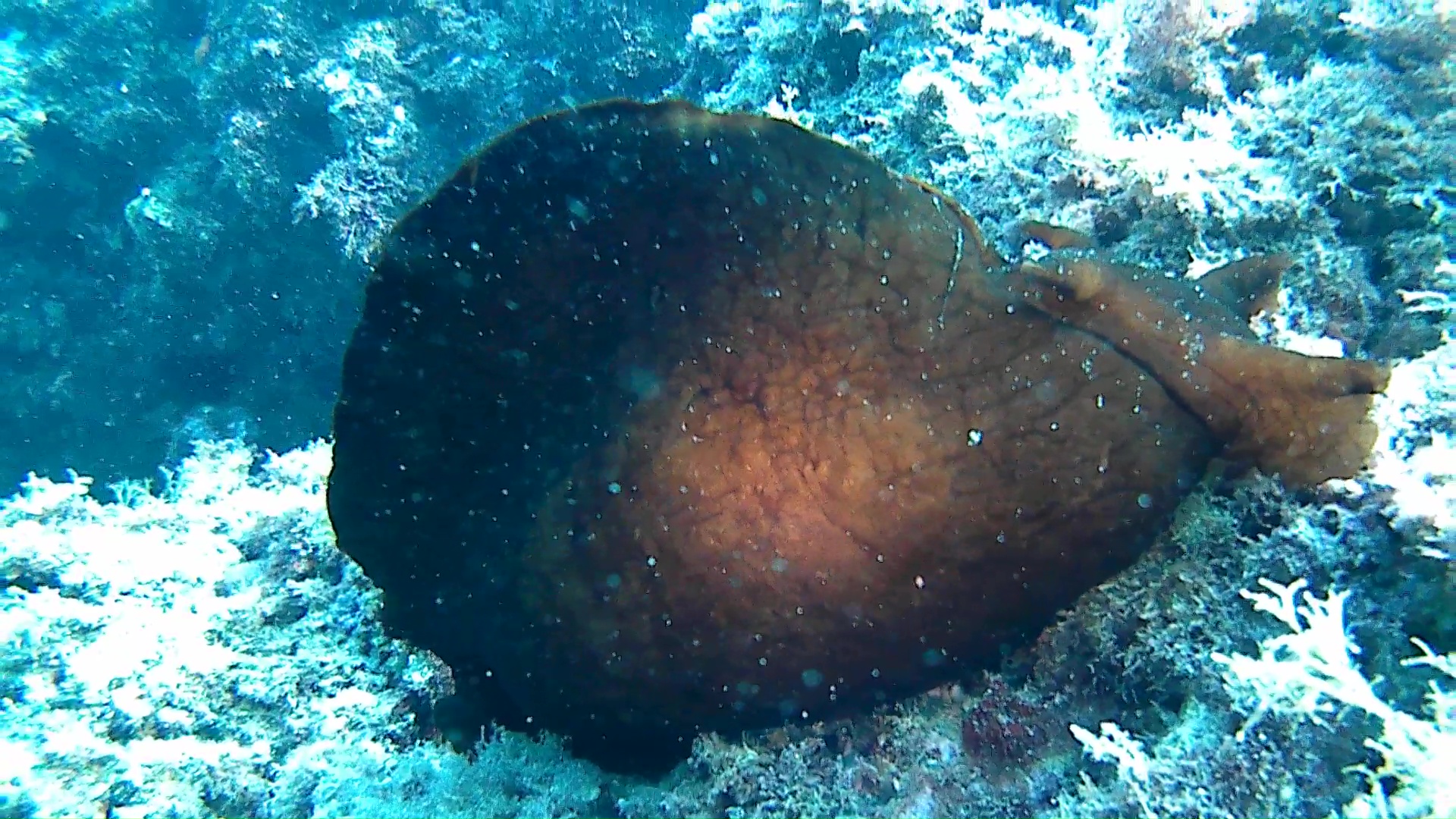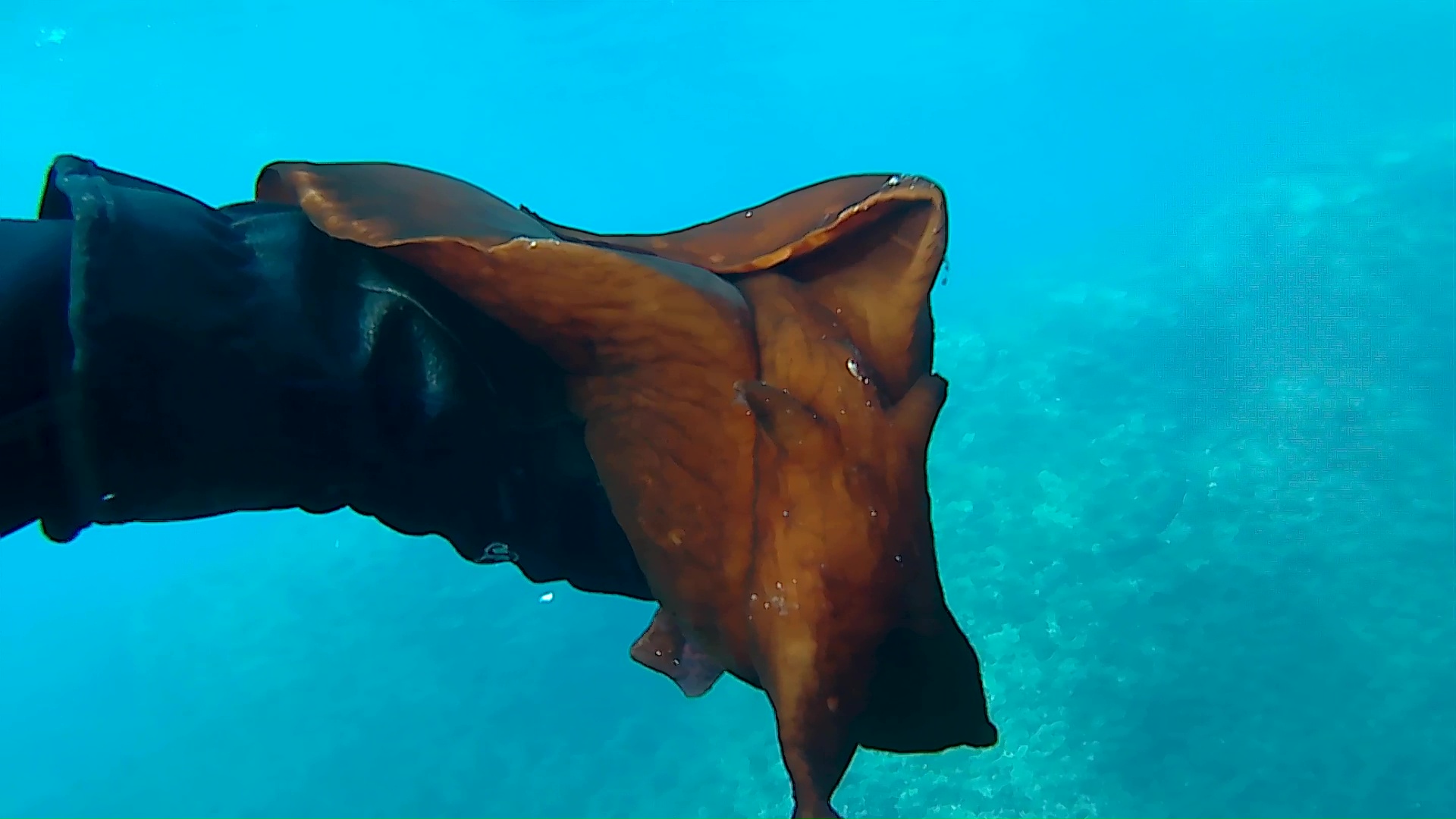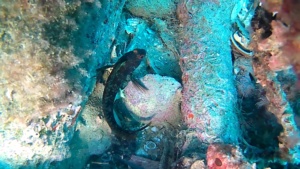Ballerina Spagnola del Mediterraneo Aplysia depilans intotheblue.it
Sea hare, Spanish Mediterranean Ballerina (Aplysia depilans Gmelin, 1791) also known as sea scia is an anaspidic mollusk of the Aplysiidae family.
Distribution and habitat
It comes from the areas rich in aquatic vegetation of the Mediterranean Sea and the east of the Atlantic Ocean.
Description
Species with very variable coloring, from light brown or reddish to almost black. It looks like a shapeless heap when it is collected on the bottom. If it is in a dorsal position it is possible to see its transparent shell which is very fragile. It reaches 30 cm.
Biology
Supply
Although in ancient times it was thought to be a deadly animal for humans and fed on their flesh , it is a herbivorous species that feeds mostly on green algae (Ulva) and marine phanerogams (Zostera) . The feeding also affects the color of the animal.
Reproduction
It is an insufficient hermaphroditic species, so it is necessary to have a partner to reproduce. The eggs are laid in such a way as to form characteristic orange cords, also called, because of their particular shape, sea spaghetti.
https://it.wikipedia.org/wiki/Aplysia_depilans
Sea hare, a shy and charming mollusk. He lives at night and uses his ink to defend himself from predators. The sea hare or sea nun is a gastropod mollusk that lives in areas rich in vegetation such as the Mediterranean Sea and the Atlantic Ocean. Usually black, it can also have coloring tints ranging from white to red. The sea hare has a transparent, very fragile shell. They usually live attacked among the rocks where they burn the bottom (in search of green algae and phanerogams) crumpling up to avoid being prey. Once the food has run out they move around explaining the “wings”, two fins that shake together in a composed manner make it seem as if the molluscum were flying in the water. The sea hare can reach 30 cm in length.
in some areas of the Mediterranean, in ancient times, sea hares were considered toxic and deadly. Rumor was widespread that anyone who touched it would lose hair and hair (hence the name of the species Aplysia depilans).
Even the sea hares have a hidden weapon like so many molluscs. It is a viscous secretion consisting of purple ink and a substance called opal that the sea hare uses to defend itself from predators. This substance would attack the antennas of sea hares predators by deactivating their chemical sensors, giving the molluscs time to escape.
The sea hares use only ink as their last defense. Usually the ink is ejected when the mollusc is already in the jaws of a fish or a lobster. At that point the lobsters leave the prey prey to a state of confusion. Having so many natural predators, sea hares, they have to rely on more defense systems. It seems that the mix given by the ink and the Opaline protects these animals from a myriad of predators.
https://www.ilgiornaledeimarinai.it/la-lepre-di-mare-il-misterioso-mollusco-
Gallery
Video Gallery
 English
English Italiano
Italiano
